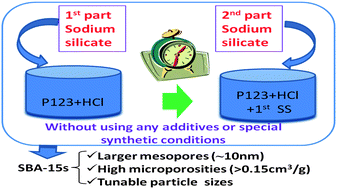A facile and versatile partitioned cooperative self-assembly process to prepare SBA-15s with larger mesopores, high microporosity and tunable particle sizes†
Abstract
A facile and versatile

* Corresponding authors
a
School of Materials and Metallurgy, Northeastern University, Shenyang, China
E-mail:
ruhq@smm.neu.edu.cn, wangw@smm.neu.edu.cn
Fax: +86-24-83680248
Tel: +86-24-83680248
b
Research school of Chemistry, the Australian National University, Canberra, Australia
E-mail:
nan.wu@anu.edu.au
c College of Chemistry, Liaoning University, Shenyang, China
A facile and versatile

 Please wait while we load your content...
Something went wrong. Try again?
Please wait while we load your content...
Something went wrong. Try again?
W. Wang, W. Shan, H. Ru and N. Wu, J. Mater. Chem., 2011, 21, 12059 DOI: 10.1039/C1JM12001H
To request permission to reproduce material from this article, please go to the Copyright Clearance Center request page.
If you are an author contributing to an RSC publication, you do not need to request permission provided correct acknowledgement is given.
If you are the author of this article, you do not need to request permission to reproduce figures and diagrams provided correct acknowledgement is given. If you want to reproduce the whole article in a third-party publication (excluding your thesis/dissertation for which permission is not required) please go to the Copyright Clearance Center request page.
Read more about how to correctly acknowledge RSC content.
 Fetching data from CrossRef.
Fetching data from CrossRef.
This may take some time to load.
Loading related content
